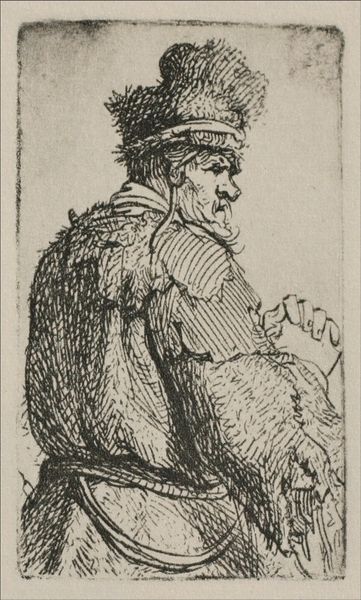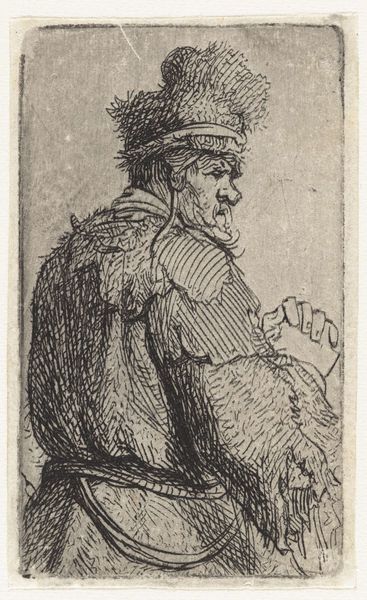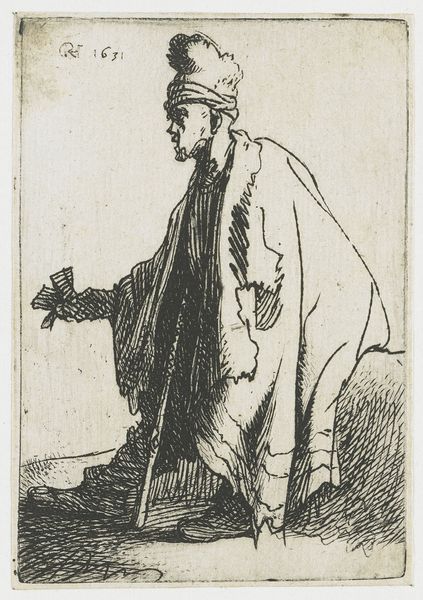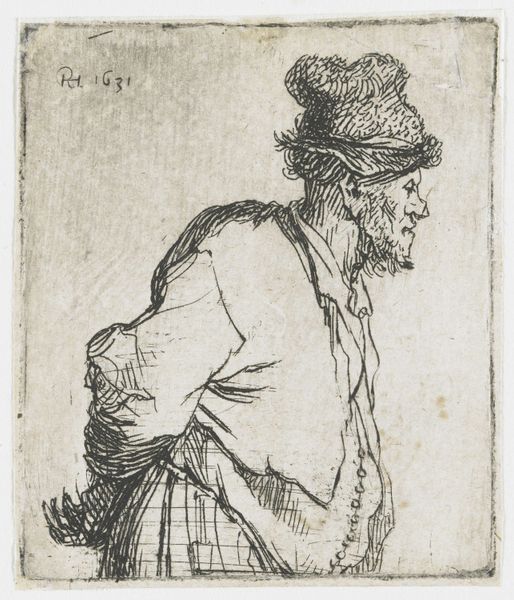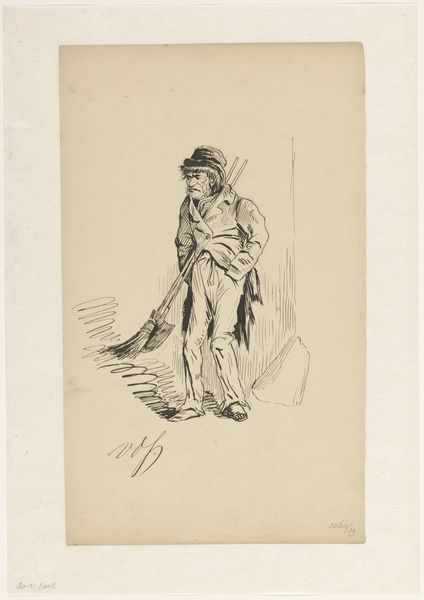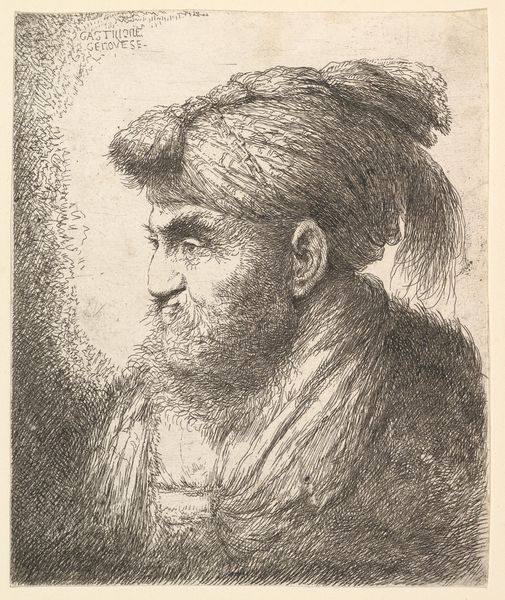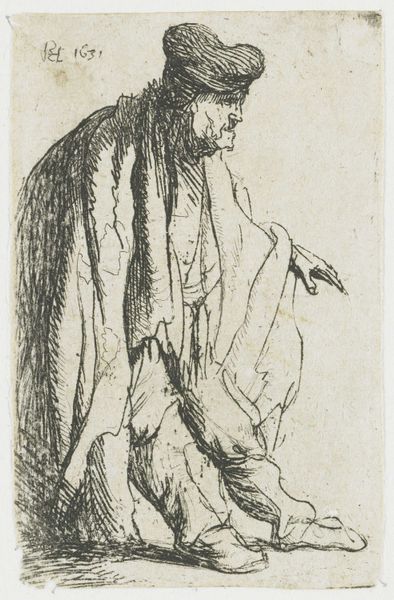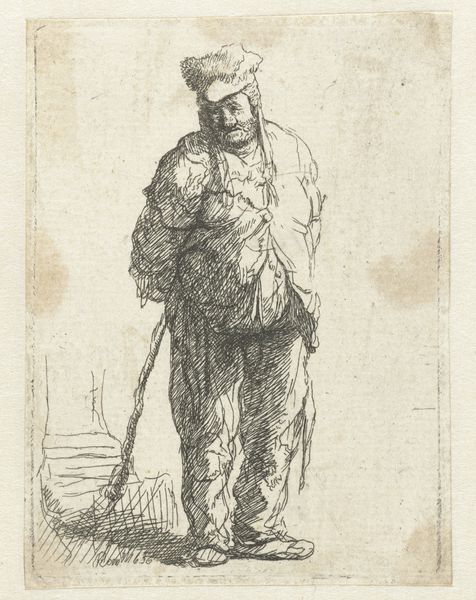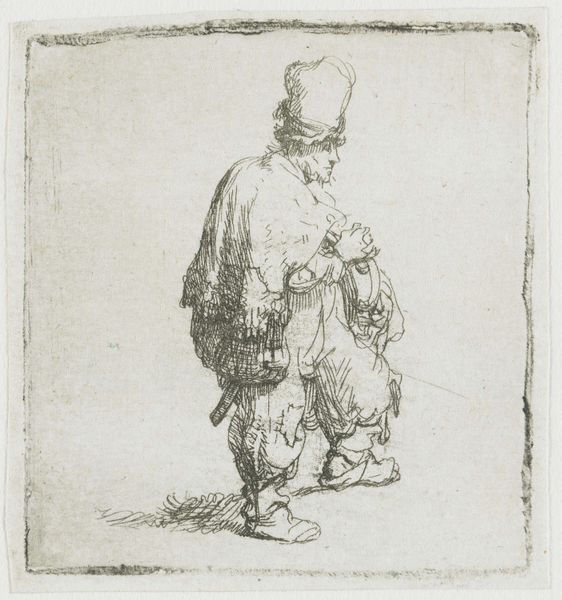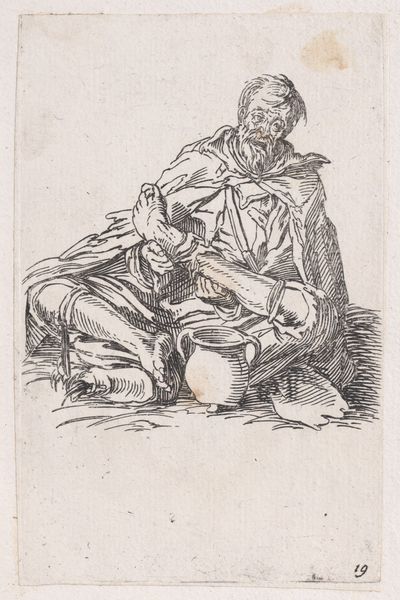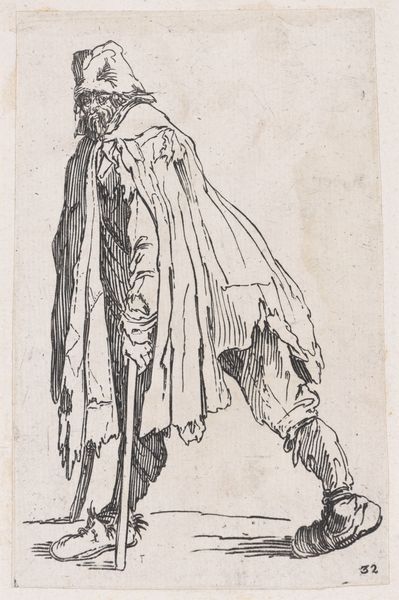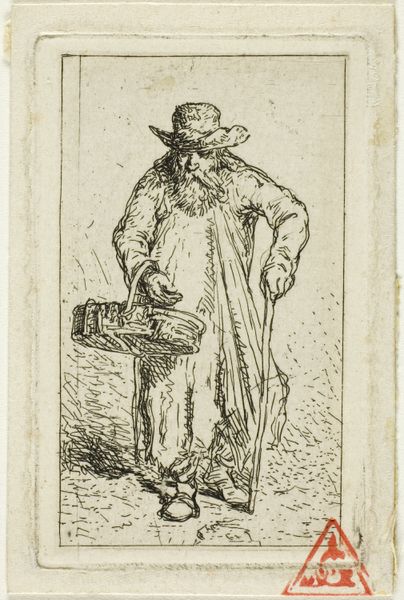
Old Man Seen from Behind, Profile Right: Half-Figure c. 1629
0:00
0:00
drawing, print, etching, paper, ink
#
portrait
#
drawing
#
dutch-golden-age
# print
#
etching
#
paper
#
ink
Dimensions: 70 × 42 mm (image); 73 × 44 mm (sheet)
Copyright: Public Domain
Curator: Let's turn our attention to this etching by Rembrandt van Rijn, created around 1629. It's titled "Old Man Seen from Behind, Profile Right: Half-Figure." You'll find it here at The Art Institute of Chicago. Editor: The first thing that strikes me is the textures—the frenetic energy in the lines used to render his cloak contrasted with the finer lines depicting his shirt. The roughness creates a certain immediate and arresting presence. Curator: It's fascinating how Rembrandt uses such simple materials, ink on paper, to create a psychologically rich portrait. The old man, seemingly unaware of being observed, evokes questions around age, poverty, and even a certain resignation to social injustices of the time. How do we reckon with representing a population on the margins? Editor: Exactly. Look at the details: The torn sleeve suggests wear, labor. The quick strokes used to depict the garment show it wasn't finely made, yet it cloaks this subject who could have made it. Also the technique is so very intriguing; the dense cross-hatching builds volume while also giving this whole work a sense of impermanence. One stroke here or there is a world of difference. Curator: It's also tempting to read the feathered cap as a signifier of identity and perhaps even status—or rather, a performative status, in that it plays with ideas of authority and hierarchy, especially during that particular period in the Netherlands, reflecting issues of power, gender, and marginality. How does this "outsider" figure into that society's social structure? Is this a portrait of defiance? A portrayal of societal failing? Editor: Possibly. He holds onto tattered clothes. The ink seems almost violently dragged across the plate to form his form—labor to depict labor or a call for care towards it. Rembrandt clearly wants us to *see* him and through what’s readily and presently surrounding him. It underscores his position outside conventional beauty or power. Curator: This piece serves as a powerful reminder of how art can engage with societal concerns, questioning preconceived notions and sparking dialogue. I am struck by the image and context and my personal placement in the conversation with them. Editor: For me, it’s about understanding Rembrandt’s technical processes. I understand the work more with the knowledge of labor.
Comments
No comments
Be the first to comment and join the conversation on the ultimate creative platform.
